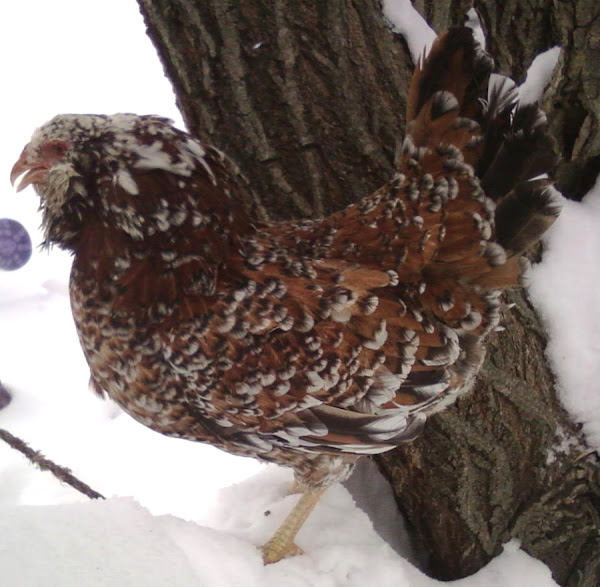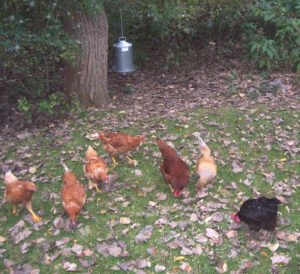Orloff chicken is an ancient dual purpose breed. Previously Orloff chicken was considered to be a Russian breed. But modern research has discovered that the breed first appeared and developed in the Persian Gulf area. And then distributed across Asia and Europe by the 17th century.
The name of this breed comes from a famous Russian breeder of these birds, named Count Orloff-Techesmensky, who did a lot for promoting this breed at that time.
Orloff chicken is also known as Russian Orloff or sometimes just Russians. This breed was first introduced to Great Britain in the 1920s and soon became popular in Germany. It was once included in the American Poultry Association’s Standard of Perfection. But due to lack of interest from breeders it was removed.
The Livestock Conservancy lists the breed as critically endangered and in the 21st century it remains a rare breed in the West. Nowadays, Orloff chicken is gaining popularity again as a dual purpose breed.
Physical Characteristics of Orloff Chicken
Orloff chicken is a beautiful, cold hardy breed. Their plumage, combined with their small earlobes, tiny walnut comb and minuscule wattles, makes them very cold hardy chicken breed.
They are well feathered and tall. Their neck and head are very thickly feathered. They have somewhat game-like appearance. They have a large brow, a beard and muffs.
Orloff chicken is mainly suited to meat production. But takes long time to grow. Hens are good layers of light brown eggs. Hens usually do not go broody. Their small walnut comb set well forward on the head.
Comb, wattles and earlobes are of bright red color. Their beak is yellow and eyes are reddish bay.

They have yellow skin, and their shanks and toes are yellow colored. Orloff chicken is a heavy breed which produce a lot of very good quality meat. On an average Orloff roosters weight about 3.6 kg and hens about 3 kg.
This breed appear in several recognized color varieties. Such as Black, Black-tailed Red, Cuckoo, Mahogany, Spangled and White. Photo from Wikipedia.
Behavior/Temperament
Orloff chicken is known to be relatively calm birds. It’s a very friendly breed with good temperament. They are extremely cold hardy birds which also lay well.
They do equally well in free range and in confinement situations. They are very active and good foragers. Hens are not broody. See full breed profile of Orloff chicken below.
| Breed Name | Orloff |
| Other Name | Russian Orloff or Russians |
| Breed Purpose | Dual Purpose |
| Breed Temperament | Friendly, Docile, Easily Handled, Calm, Bears Confinement Well, Quiet |
| Breed Size | Large |
| Broodiness | Seldom |
| Comb | Walnut |
| Climate Tolerance | All Climates (Extremely Cold Hardy) |
| Egg Color | Light Brown |
| Egg Size | Medium |
| Egg Productivity | Medium |
| Feathered Legs | No |
| Rarity | Rare |
| Varieties | Recognized Color Varieties are Black, Black-tailed Red, Cuckoo, Mahogany, Spangled and White |
The Good
- Very active
- Friendly
- Easy to handle
- Beautiful
- Great foragers
- Do well in free range
- Extremely cold hardy
- Bears confinement well
- Good layers
- Very hardy
- Excellent meat quality
- Large size
- Game-like appearance
- Great dual purpose breed
The Bad
- Rare breed (hard to source good stock)
- Slow growing
Is Orloff Chicken Good for You?
Orloff chicken is good for you if you…….
- Want to raise dual purpose chickens.
- Want to produce a lot of meat with good eating qualities as well as good number of eggs.
- Are willing to raise some very active and friendly chickens which are very easy to handle.
- Are looking for some chickens which are great foragers.
- Prefer raising such chicken breed which can equally do well in free range and bears confinement well.
- Want to raise some large chickens with somewhat game-like appearance.
- Live somewhere with cold climates and looking for some cold hardy chickens.






